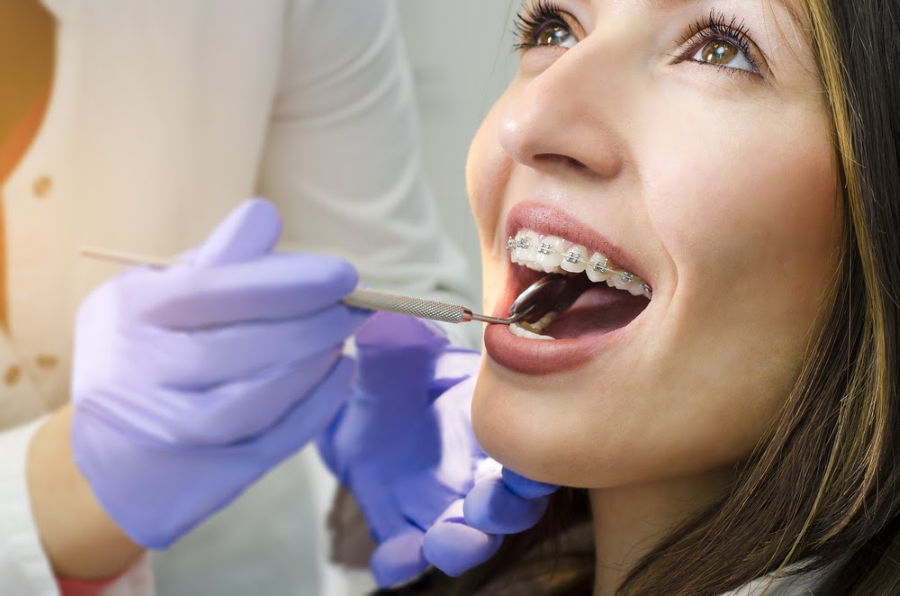An Unbiased View of Legacy Orthodontics
An Unbiased View of Legacy Orthodontics
Blog Article
Legacy Orthodontics Things To Know Before You Buy
Table of Contents3 Simple Techniques For Legacy OrthodonticsThe Greatest Guide To Legacy OrthodonticsUnknown Facts About Legacy OrthodonticsThe Only Guide to Legacy OrthodonticsSome Known Factual Statements About Legacy Orthodontics
In enhancement, we provide adjustable therapy timetables, adaptable settlement alternatives and an enjoyable, delightful experience.An orthodontist is a dental practitioner educated to diagnose, protect against, and treat teeth and jaw abnormalities. Orthodontists work with people of all ages, from youngsters to adults.
Malocclusion, or misaligned teeth, can bring about dental issues, including tooth decay, periodontal condition, and challenging or painful chewing. However not everybody is born with straight teeth. If you have a bad bite or huge spaces between your teeth, you may intend to speak with a dental practitioner specializing in orthodontic care.
Our Legacy Orthodontics Ideas
( Picture Credit Score: DigitalVision/Getty Images) Orthodontists make use of repaired and removable dental devices, like braces, retainers, and bands, to transform the placement of teeth in your mouth. Orthodontic therapy is for oral irregularities, including: Uneven teethBite problems, like an overbite or an underbiteCrowded teeth or teeth that are too much apartJaw misalignmentThe objective of orthodontic therapy is to improve your bite.
A healthy and balanced bite guarantees you can consume, eat, and talk effectively. While you could assume of orthodontists as mostly for youngsters or teenagers that require dental braces, they can deal with oral problems at any type of age. Orthodontists attend college, oral college, and orthodontic college. After college graduation, they invest 2 or 3 years in an orthodontic residency program.
All orthodontists are dentists, yet not all dental practitioners are orthodontists. Orthodontic residency programs supply extensive, concentrated guideline for oral experts. They focus on two locations: Exactly how to appropriately and safely move teeth Just how to effectively lead growth in the teeth, jaw, and faceOnce an orthodontist has completed training, they have the choice to end up being board accredited.
Some Known Details About Legacy Orthodontics
Malocclusion leads to tooth congestion, an askew jaw, or uneven bite patterns. Malocclusion is normally treated with: Your orthodontist attaches steel, ceramic, or plastic square bonds to your teeth.
If you have only small malocclusion, you may be able to make use of clear braces, called aligners, as opposed to conventional dental braces (https://soundcloud.com/legacyortho). Some people need a headwear to help relocate teeth right into line with pressure from outside the mouth. After dental braces or aligners, you'll require to wear a retainer. A retainer is a custom tool that maintains your teeth in position.
They're usually utilized on kids. They can create extra area in the mouth without needing to draw teeth. If you have a serious underbite or overbite, you might need orthognathic surgery (likewise called orthodontic surgical procedure) to lengthen or shorten your jaw. Orthodontists use cords, surgical screws, or plates to sustain your jaw bone.
You may need to see an orthodontist if you have: Crowding or not enough room for every one of your teethOverbite, when your top teeth come your base teethUnderbite, when your base teeth are also much forwardSpacing or issues with gapsCrossbite, which is when your upper teeth fit behind your bottom teeth when your mouth is closedOpen bite or a vertical space in between your front base and upper teethMisplaced midline, when the facility of your base and upper teeth do not align Fixing an oral malocclusion can: Make attacking, eating, and speaking easierImprove the symmetry of our face and your general appearanceEase discomfort from temporomandibular joint problemsSeparate your teeth and make them less complicated to clean, aiding prevent dental caries or dental caries It's typically a dental professional that first notices misaligned teeth throughout a regular examination.
Unknown Facts About Legacy Orthodontics

Throughout your initial orthodontic consultation, you'll likely have: A dental examPhotos taken of your face and smileDental X-raysPanoramic (360 level) X-rays of your face and headImpressions to produce mold and mildews of your teethThese examinations will certainly aid your orthodontist know how to proceed with your treatment. leesburg orthodontics. An orthodontist is a dentist that's had training to treat your teeth and jaw
An orthodontist is concentrated on your bite, so something like a broken tooth would be handled by a dental professional. Orthodontists are concentrated on your bite, or the method your teeth fit together, and the straightness of your teeth.
Ever before questioned just how celebrities constantly seem to have flawlessly aligned teeth? The solution usually exists in the experienced hands of an orthodontist. What precisely does an orthodontist do? my sources Orthodontists are oral specialists that concentrate on remedying irregularities in the teeth and jaws. Their knowledge surpasses simply producing a beautiful smile; it reaches boosting your overall dental health and function.
Indicators on Legacy Orthodontics You Need To Know

While dental braces are one of the most generally identified orthodontic therapy, orthodontists have a varied toolkit at their disposal. The certain technique chosen depends upon the extent of the case, the patient's age, and specific choices. These reliable braces make use of a system of brackets adhered to the teeth and connected by wires.
Clear aligners, like Invisalign, are a preferred option for patients looking for a much more very discreet treatment option. These detachable trays are personalized to progressively move the teeth's placement. Headgear might be utilized combined with braces or aligners to use added targeted pressures, specifically for dealing with jaw inconsistencies. In cases of narrow jaws, palatal expanders can be used to develop room for correct tooth alignment.
Report this page